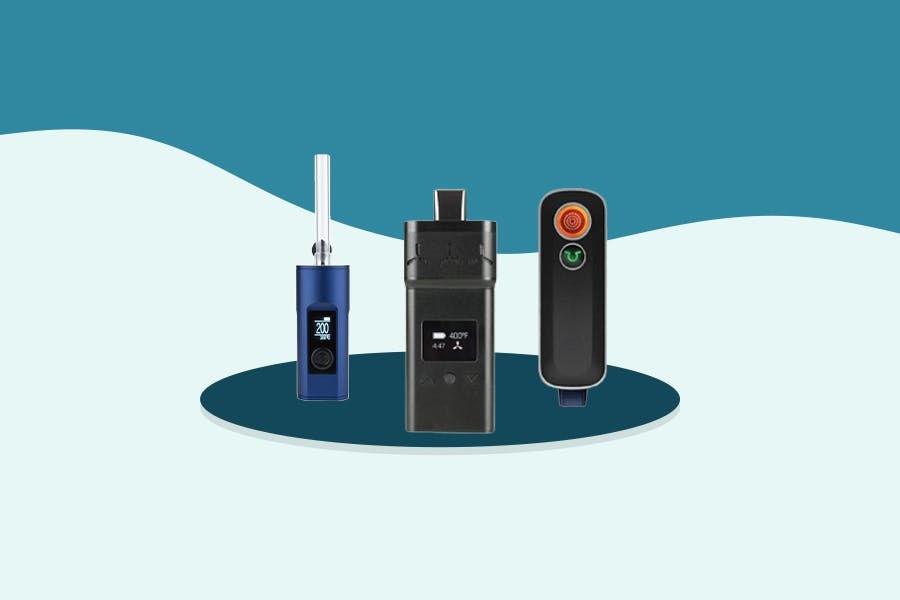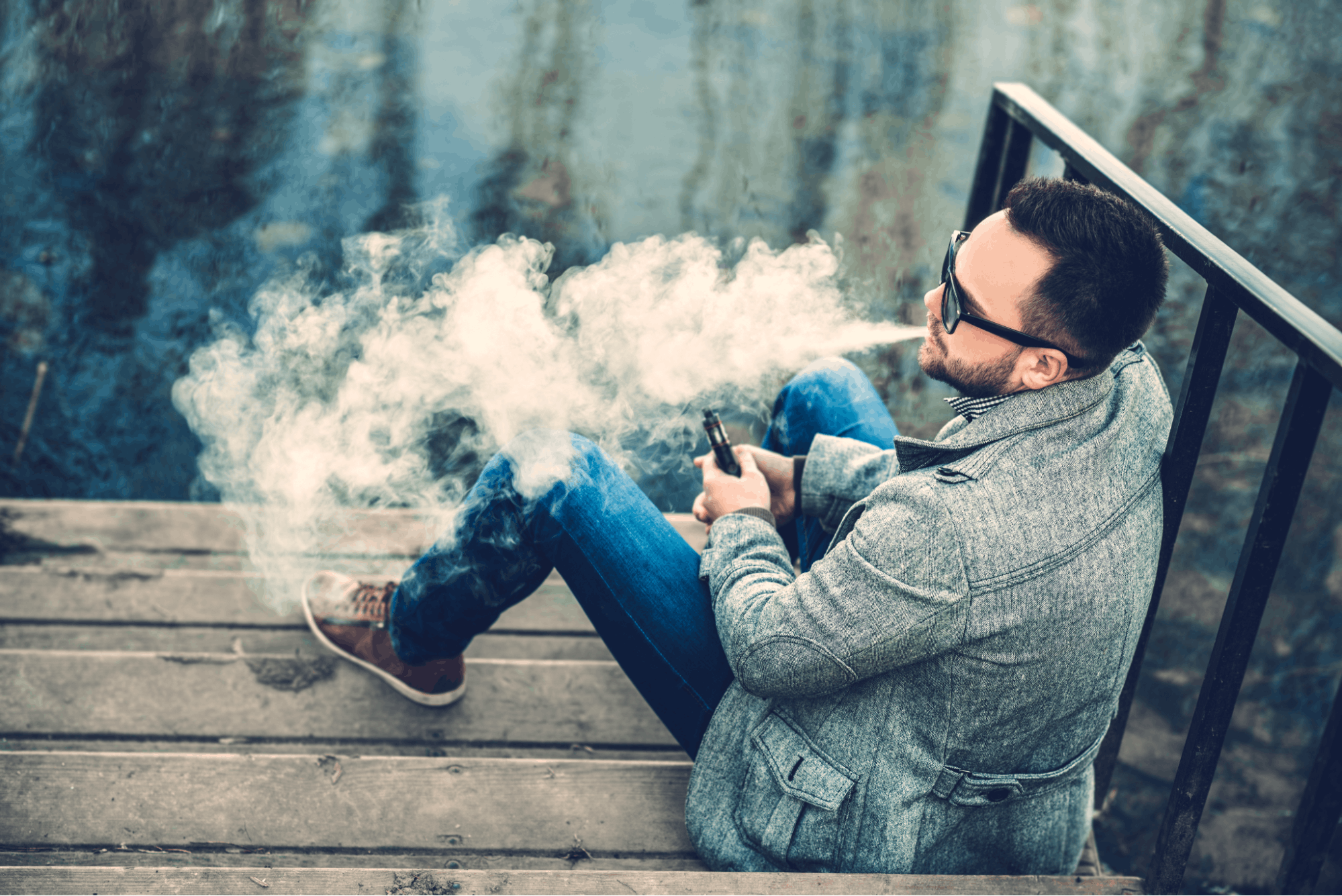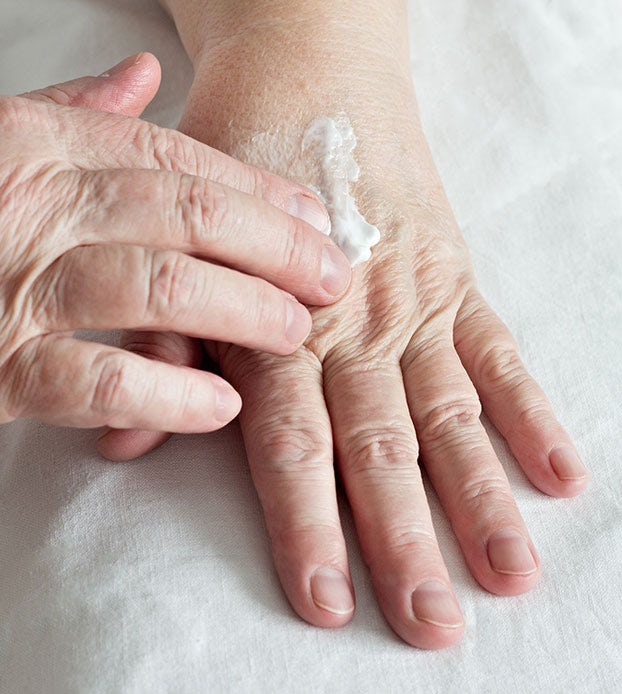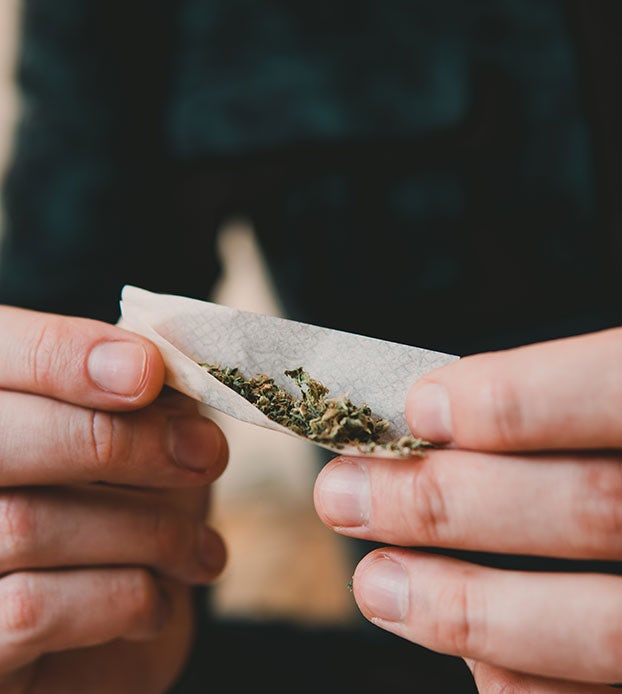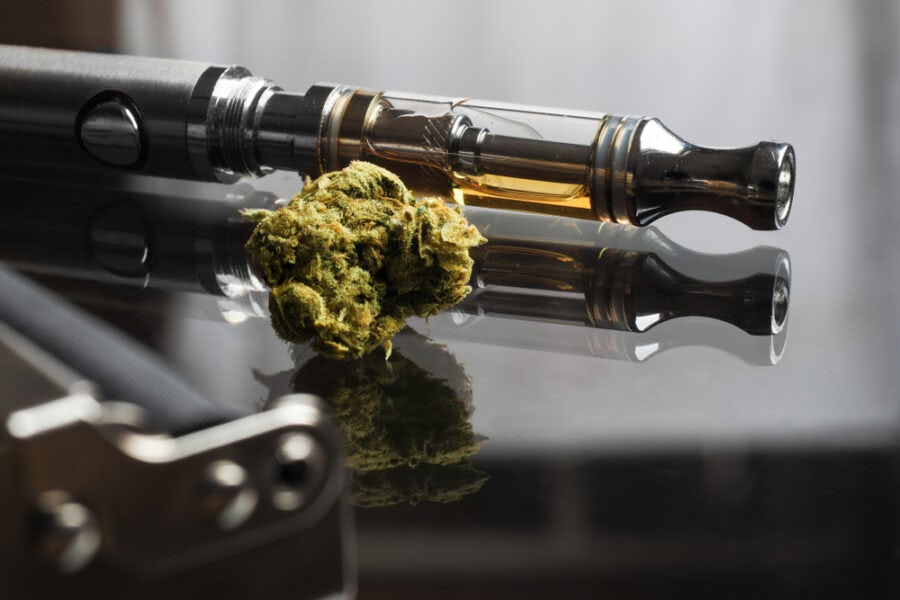What’s the best temperature for dry herb vaporizing? Well, it depends on what effects you’re looking for.
There is no one temperature that works best for everyone, which makes determining exactly what temperature to vape weed at subjective. But generally, the best range for vaping cannabis is between 325°F and 400°F.
There are guidelines you can follow to have the best experience with vaping dry herb. There are three temperature ranges for vaporizing cannabis, with different benefits.
- Low range: 325 – 350°F (163 – 177°C)
- Medium range: 350- 400°F (177 – 204°C)
- High range: 400°F+ (204°C+)
Here’s what you need to know about vaping temperatures and which one will work best for you.
Why vaporize cannabis?
- Smoking or combusting any plant material can create unhealthy byproducts such as tar, carcinogens, toluene, naphthalene and benzene. Dry herb vaporizing is a healthier alternative where you can avoid combustion by heating your medicine slower and to a lower temperature compared to smoking. 1
- A dry herb vaporizer gives you the most control over the temperature of your weed. Using a lighter can heat cannabis up to 4,000°F (2,200° C), while a dab rig can reach 700°F (370°C). These high temperatures can incinerate the minor cannabinoids and terpenes in your weed so you lose access to their medical benefits. But when using a vaporizer, you can control the heat down to the degree. 2
- Controlling the vape temp helps give you better control over the desired effects of the weed. Temperature impacts your cannabis experience by activating different cannabinoids and terpenes, so it’s important to understand the different heat intervals as well as what experience you’re looking for.
Why does the vape temp for weed matter?
The best cannabis experience is created by the entourage effect, or the synergistic combination of the cannabinoids, terpenes, and other chemical compounds in the plant.
However, every cannabinoid and terpene has its own boiling point, and the chemical composition of your vapor will be different according to which compounds are boiling.
The chemical makeup (chemovar) of the strain (cultivar) you’re vaping has the most direct effect on your high. So to determine the best temperature to vape at , you need to know what your desired effects are and have a Certificate of Analysis (CoA).
Do you need to have a productive day of getting through your to-do list? Are you a medical user seeking the effects of specific cannabinoids and terpenes? Or, are you ending your week and ready to take the edge off?
Generally speaking, lower temperatures provide a better mix of cannabinoids and terpenes and have a more noticeable effect on your mind while higher temperatures provide a wider range of cannabinoids and have a more direct effect on your body. However, it is possible to vaporize your weed at such a high temperature it no longer produces a good experience.
Which temperature works best for you depends on a few things. So, let’s explore the benefits of each temperature range.
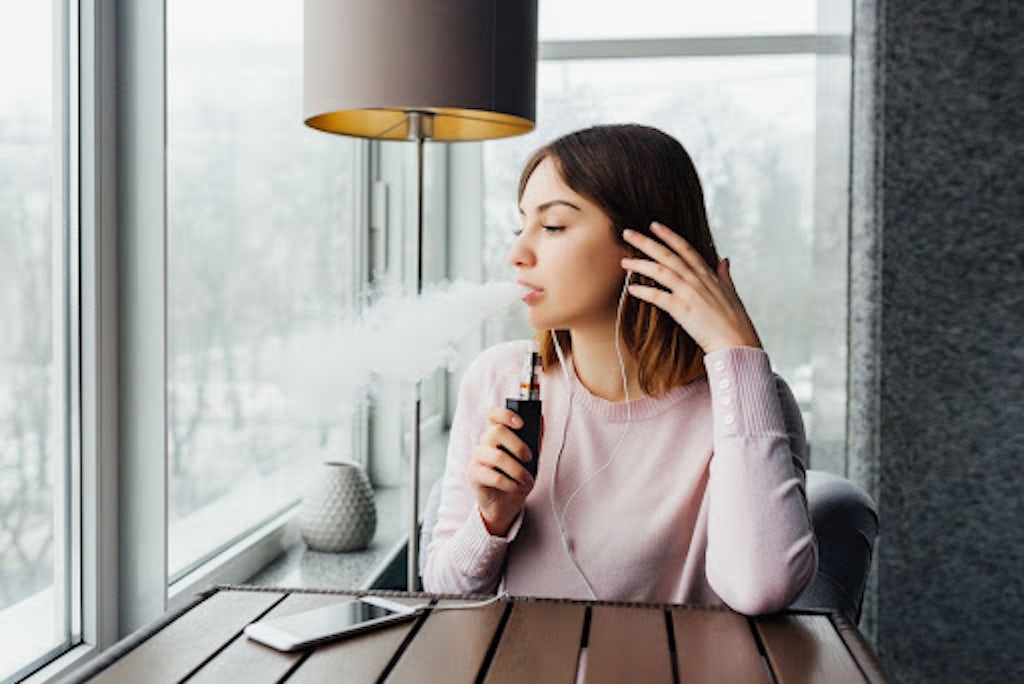
What’s the best temperature to vape weed?
Low heat: 325 – 350°F (163 – 177°C)
The benefits:
- Best for enjoying the flavors (terpenes) in the weed.
- Lower temps deliver less cannabinoids and more terpenes, resulting in a more mild high
- Easier on the throat and lungs
- Works well for newcomers, medicinal users, and terpene lovers
- Lower temperatures are best for keeping hits smaller and avoiding tolerance
- The lower the temperature may help your weed stash or smoke session last longer
There is a minimum temperature necessary to feel something from your weed! THC has a boiling point of 315°F, so if you vape anything less than 325°F, you’re not likely to feel much.
Vaporizing your weed at low heat is the best way to enjoy the flavors and terpenes in the bud. At lower temperatures you are better able to distinguish between different strains or cultivars, as fewer of the fragile terpenes will be destroyed by heat.
The vapor is cooler, making it less harsh on the throat. Low heat helps you elevate your mood and enjoy the positive effects of the bud without harsh coughs, red eyes, cottonmouth, and couch-lock. If you like to wake and bake, or use cannabis to get through your to-do list, this is the best range to be in.
However if you’re an experienced cannabis user, vaping at this temperature may not produce many noticeable effects.
Cannabinoids
- Delta-9 THC
- CBD
- CBG
- CBC
- THCa
- CBDa
Terpenes
- Pinene
- Beta-caryophyllene
- Myrcene
- Limonene
- Citronellol
- Limonene
- Terpinolene
- Linalool
- Humulene
- Phytol
- Caryophyllene Oxide
Medium heat: 350 – 400°F (177 – 204°C)
The benefits:
- Better access to cannabinoids
- Preserves flavor of terpenes
- Euphoric, relaxing, or meditative high
- Warm vapor rich with flavors
- More THC availability, increasing side effects
- More CBD availability
Medium heat gives you access to a wider range of cannabinoids while preserving the flavors and entourage effect of the terpenes. At higher heat, the vapor is warmer and thicker, making it a more satisfying experience for smokers.
Higher heats increase the availability of THC, so your psychoactive effects will be stronger. CBD has a higher boiling point than THC and is more available in this temperature range. This can present in a relaxing or euphoric high, meditative without sleepiness.
Medical users will enjoy the combined effects of the cannabinoids and terpenes, with more apparent body effects. If you’re vaping to get the most out of the terpenes, don’t exceed 356°F (180°C).
Cannabinoids
- Delta-9 THC
- CBD
- CBN
- CBG
- CBC
- THCa
- CBDa
Terpenes
- Limonene
- Terpinolene
- Linalool
- Humulene
- Phytol
- Caryophyllene Oxide
- Citronellol
High heat: 400°F+ (204°C+)
The benefits:
- Strongest psychoactive effects, most similar to smoking experience
- Intense effects
- Maximum THC availability
- Higher cannabinoid extraction, least terpene availability
- Hottest vapor
For the most intense experience, this is the temperature range to be in. This vapor will be hot, less flavorful, and hit intensely. At these temperatures, more cannabinoids are available, but the terpenes are burned away.
These temperatures are the closest to combustion temperatures, or the smoking experience, so you’ll get the strongest psychoactive effects possible. These effects may be too intense for new users, and definitely don’t vaporize your cannabis at these temps if you have anything else to do! High heat vaporizing is best for ending your day in a relaxed and euphoric state of mind.
You can turn your vaporizer too high for a good experience. Many cannabinoids and terpenes are destroyed or altered at temperatures exceedings 430°F (221°C), and you run the risk of burning your weed. If you take a puff and it tastes like burning flower or harsh smoke, turn your vaporizer down. 3
Note: Heating your cannabis vape temps over 392°F can still produce toxic by-products like benzene or toluene. These are present in lower quantities than in full combustion like smoking and dab rigs, but can still be present. 4
Cannabinoids
- Delta-9 THC
- CBD
- CBN
- CBG
- CBC
- THCa
- CBDa
- THCv
Terpenes
- Phytol
- Humulene
- Caryophyllene Oxide
- Citronellol
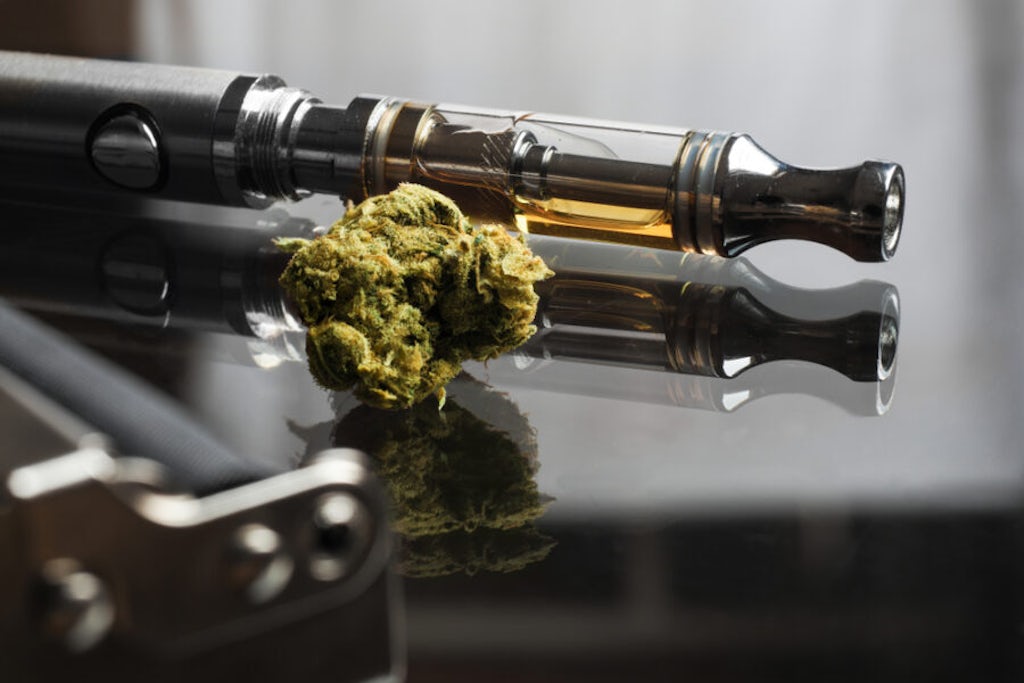
Preserving terpenes and cannabinoids
One of the biggest benefits of vaporizing weed is the ability to preserve terpenes and cannabinoids. Each chemical compound has its own boiling point, so to get the most of them, you need to know the temperatures they activate at.
It’s important to note that reaching these boiling points will not change the smell of the cannabis. The aromas of terpenes are most present in raw flower at room temperature but reaching the boiling point of each terpene and cannabinoid gives you the best access to its benefits.
Terpene boiling points
| Terpene | Boiling point |
|---|---|
| Humulene | 223°F/ 106°C |
| Pinene | 311°F/ 155°C |
| Myrcene | 331°F/ 166°C |
| Limonene | 348°F/ 176°C |
| Ocimene | 350°F/ 177°C |
| Terpinolene | 361°F/ 183°C |
| Linalool | 388°F/ 198°C |
| Phytol | 399°F/ 203°C |
| Terpineol | 426°F/ 218°C |
| Citronellol | 437°F/ 225°C |
| Caryophyllene | 473°F/ 245°C |
Cannabinoid boiling points
| Cannabinoid | Boiling Point |
|---|---|
| CBG | 126°F / 52°C |
| THCa | 220°F / 104°C |
| CBDa | 248°F / 120°C |
| THC | 315°F / 157°C |
| CBD | 356°F / 180°C |
| CBN | 365°F / 185°C |
| THCv | 428°F / 220°C |
| CBC | 428°F / 220°C |
Finding the best temp to vape weed
Every vaporizer is different, so it may take some experimenting to find the best temperature for your cannabis experience. To find the best marijuana vaporizer temp for you, determine your desired effects, and start in that temperature range. Adjust by 5-10 degrees from there if needed.
There are a variety of marijuana vaporizers on the market, and some are better than others. To find the best one, seek out a reputable retailer (not a third-party site) and look for a convection vape.
Not all vaporizers will display the temperature; some only have heat settings of low, medium, and high. Many battery operated vape pens won’t display the temperature, making it hard to know what you’re heating your cannabis to.
Types of vaporizers
Convection vs. conduction vaporizer
Typically, convection-style vaporizers are considered more accurate with better heat distribution than conduction vaporizers. Convection vaporizers circulate hot air through the cannabis, preventing it from coming in direct contact with the heat source. Conduction vaporizers place the weed directly on top of the heat source and can scorch or even burn the plant.
Vape pens
There are a few different types of vape pens, each using a different form of cannabis and producing a different experience. Some vape pens are simply smaller versions of tabletop vaporizers and allow you to use dry herb. Others require processed cannabis extracts such as oil, cartridges, or wax.
For the cannabis user on the go, a small portable dry herb vape can be the perfect compromise for a great high without the worry of rolling joints or packing a bowl and lighting up.
However, the vape pens that use other forms of cannabis will produce a different experience. These pens often have inexact temperature controls, with flashing colors to indicate the temperature range or using low, medium, and high measurements. Poorly manufactured cartridges and oils carry the risk of toxic byproducts and lung damage, so always ensure you’re getting your cannabis from a reputable source. When in doubt, ask to see the product’s lab results or certificate of analysis (COA).
Is dabbing different from vaporizing?
Yes, using a dab rig is a different ingestion method than vaporizing. Dab rigs use conduction heat, while most dry herb vapes use convection heat. When dabbing, cannabis extract is applied directly to a heat source and converted to smoke.
Dab rigs run hotter than vaporizers, with temperatures between 500 and 700°F (260 – 370°C). These high temperatures can increase the risk of chemical byproducts, including benzene. In addition, using cannabis extract can provide a vastly different experience than dry herb.
Depending on the formulation and extraction method most processed products don’t contain the full spectrum of cannabinoids, terpenes and flavonoids compared to unprocessed cannabis flower. 5
Sources
- Chaiton M, Kundu A, Rueda S, Di Ciano P. Are vaporizers a lower-risk alternative to smoking cannabis? Can J Public Health. 2021;10.17269/s41997-021-00565-w. doi:10.17269/s41997-021-00565-w
- Loflin M, Earleywine M. No smoke, no fire: What the initial literature suggests regarding vapourized cannabis and respiratory risk. Can J Respir Ther. 2015;51(1):7-9.
- Guo W, Vrdoljak G, Liao VC, Moezzi B. Major Constituents of Cannabis Vape Oil Liquid, Vapor and Aerosol in California Vape Oil Cartridge Samples. Front Chem. 2021;9:694905. Published 2021 Jun 21. doi:10.3389/fchem.2021.694905
- Gieringer, Dale. (2001). Cannabis “vaporization”: A promising strategy for smoke harm reduction. J Cannabis Ther. 1.
- Meehan-Atrash J, Luo W, Strongin RM. Toxicant Formation in Dabbing: The Terpene Story. ACS Omega. 2017;2(9):6112-6117. doi:10.1021/acsomega.7b01130
Sign up for bi-weekly updates, packed full of cannabis education, recipes, and tips. Your inbox will love it.

 Shop
Shop Support
Support
